What are the Different Types of Cranes Used for Construction?
Do you know the difference between a tower crane and a crawler crane? Wonder what the difference is between an all-terrain crane and a rough terrain crane? In this article, we look at static style cranes and mobile cranes and break down the differences in design and common applications.
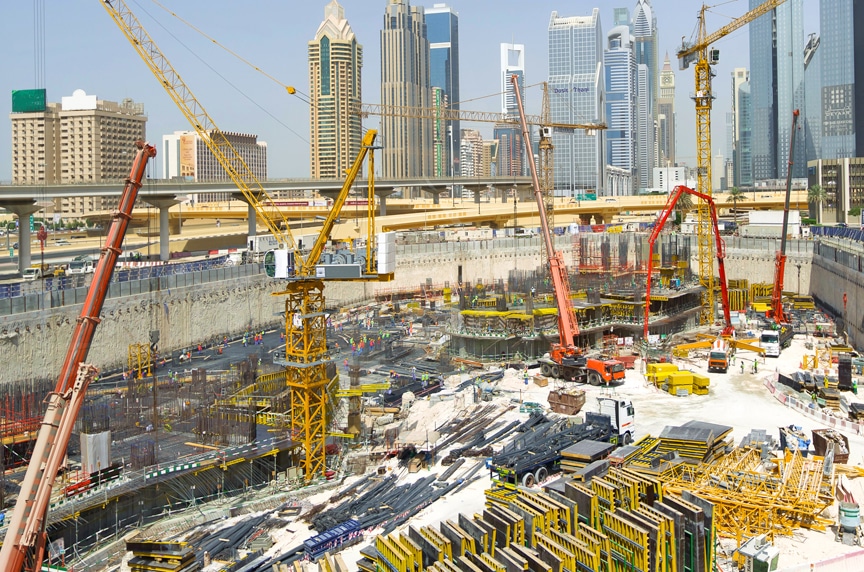
When you walk onto a construction site, it’s amazing to see all of the different types of heavy equipment and machinery being used. Often, the very first thing you see is a crane with its boom or mast up in the air carrying or lifting a load.
Whether you’re new to the industry, or a seasoned veteran, there’s a good chance that you’ve encountered crane equipment that you haven’t seen, or you’ve heard a crane term that you’re not familiar with.
With over 65 years of providing lifting and rigging solutions, rigging inspection services, and lifting and rigging training for all types of industries, we’ve partnered with customers using virtually every type of crane.
In this article, our goal is to help you establish a base-level understanding of the different types of cranes, how they’re used, and how they differ from each other. In this article, you’ll learn more about:
Static Cranes vs. Mobile Cranes
There are two main categories of cranes: static cranes and mobile cranes. A static crane is a permanent/semi-permanent structure fixed to the ground or building that lifts and moves loads along a fixed path. A mobile crane is mounted on treads or wheels and can be moved from job site to job site.
Mobile cranes are not restricted to a fixed path like a static crane. Some mobile cranes are capable of a “pick and carry” function, where they quite literally pick up a load and carry it to a different location via its treads or wheels. Some mobile cranes require the use of outriggers, counterweights, or even on-site assembly.

Types of Static Cranes
A static crane is a permanent/semi-permanent structure secured to the ground or building that is restricted to a fixed path.
On an overhead crane, the basic components include an overhead bridge that moves back and forth along what is called a runway while the hoist moves side to side along the bridge beam.
A tower crane’s basic components are the vertical base (the tower) and a rotating horizontal jib along which the trolley and hoist travel. While an overhead crane’s movement is limited to a rectangular bay, a tower crane’s movement is limited to the jib’s radius.
A level-luffing crane, like a tower crane, consists of a vertical base and attached jib, but with additional jib mobility and hook leveling capabilities.
Overhead Cranes
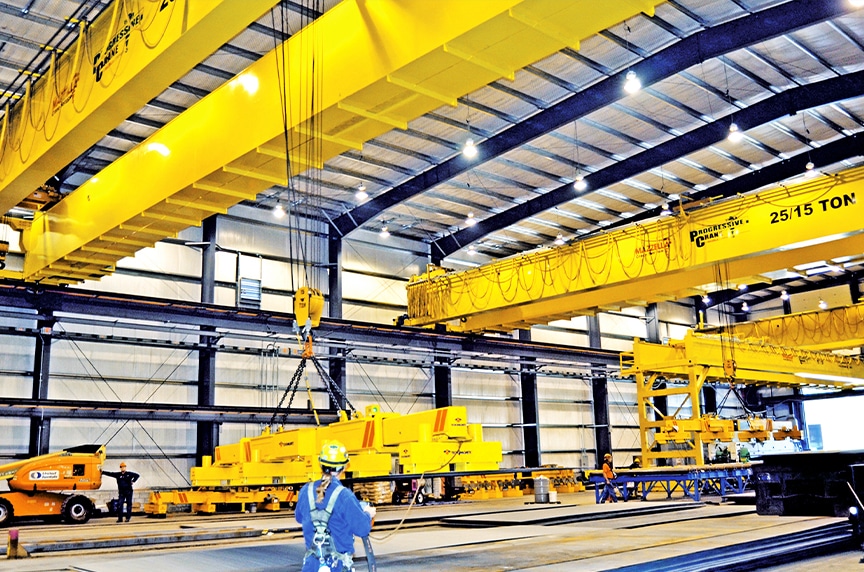
On an overhead crane, a horizontal beam called the bridge travels up and down a runway on a track or rail. A trolley and hoist move side to side along the bridge to lift and lower loads throughout a rectangular bay. These types of cranes are used to increase safety and efficiency within a warehouse or facility and have varying load limits ranging anywhere from .25 to 400 tons.
The basic way to identify an overhead crane is that it’s exactly what it sounds like, overhead—the beam moves horizontally up and down a runway above a facility or construction site along a fixed path.
Overhead cranes are usually permanent structures in facilities or construction sites where they are installed for repetitive workflow use. The most commonly referenced overhead cranes are bridge cranes, but there are several types of overhead cranes, including:
- Bridge crane
- Gantry crane
- Monorail crane
- Jib crane
- Workstation crane
Tower Cranes
Tower cranes are the cranes you see along city skylines that are used to build tall structures such as skyscrapers. The basic components of a tower crane are a vertical tower—also known as a mast—and an outstretched jib.
The trolley and hook block travel along the jib, which can rotate 360 degrees around the mast (this motion is called slewing). Often, these cranes are assembled using smaller, mobile cranes.
There are three different types of tower cranes:
- Hammerhead cranes
- Luffing tower cranes
- Self-erecting tower cranes
Hammerhead Tower Crane
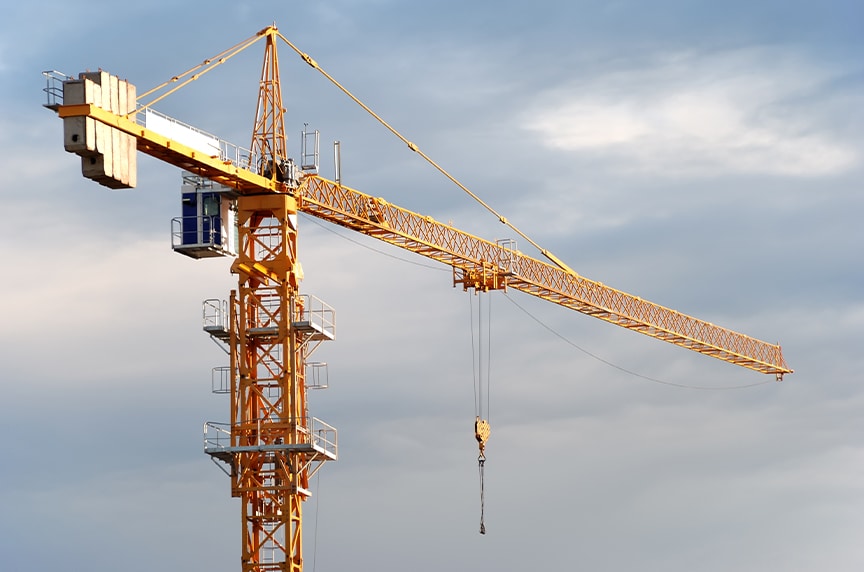
On a hammerhead tower crane, the jib rotates 360 degrees horizontally around the mast at a fixed level — with the structure resembling an upside-down “L.”
Racking—when the trolley moves the load horizontally along the jib without changing its level—is a function unique to this type of tower crane.
You may have heard hammerhead tower cranes referred to as an “A-frame” tower crane, or in some cases as a topless/flat top tower crane. The difference between an A-frame and a topless tower crane, is the presence of metal work (the shape of which resembles an “A”) above the crane connecting the jib to the counter jib.
The purpose of a flat top crane is to be used in situations with low head-room or where multiple cranes may slew underneath or above one another. In the past, the drawback to flat top cranes was their inability to lift comparable capacities to that of an A-frame crane. According to Cranes Today, flat-tops are beginning to take over the market with comparable lifting capacities of 32, 40, or even 50 tons.
Luffing Tower Cranes
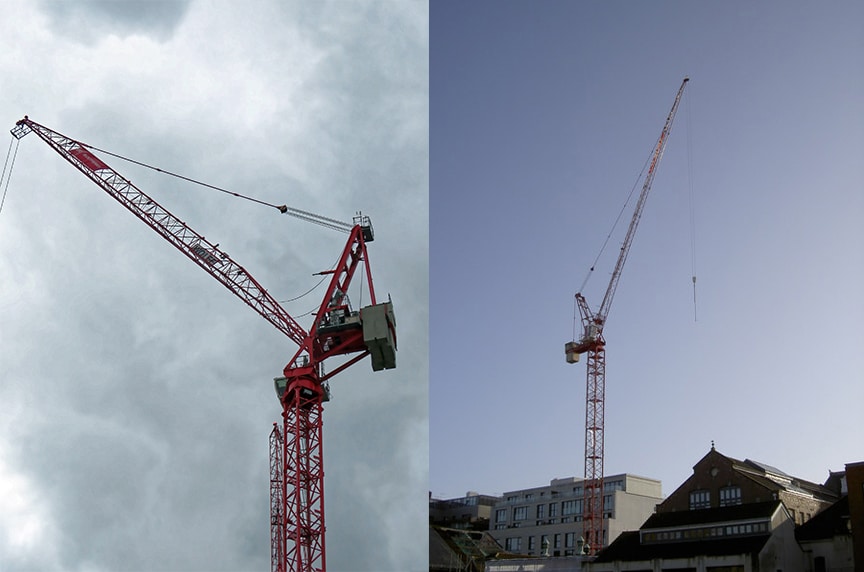
A luffing tower crane is also known as a luffing-jib crane. Its design is similar to a hammerhead tower crane, with the exception that the jib is latticed and can be raised and lowered—a motion called “luffing.”
With additional jib mobility, these cranes can:
- Lift heavier capacities than hammerhead cranes
- Are more expensive
- Are especially applicable for work in congested areas and/or with multiple cranes because of their reduced slewing radius
Self-Erecting Tower Cranes (SETC)
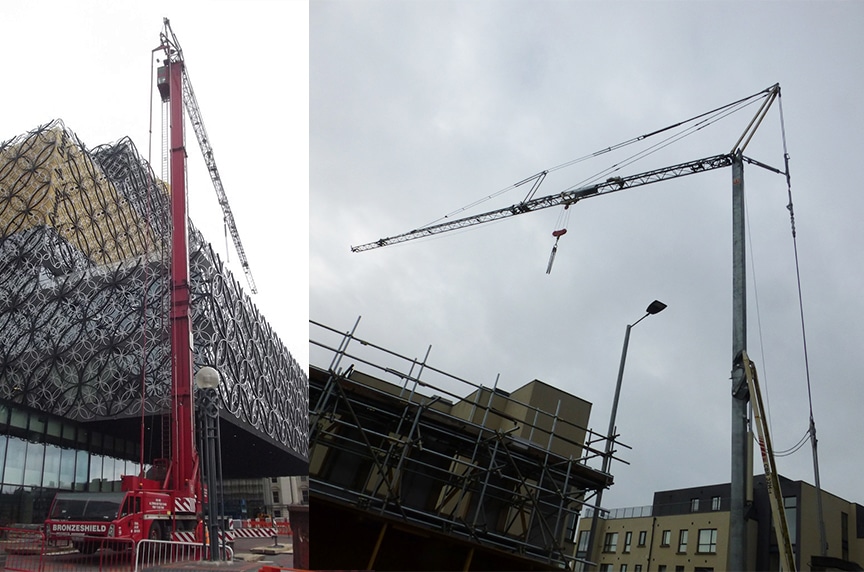
Self-erecting tower cranes include a horizontal jib and mast mounted to a ballast and has the ability to fold and unfold for dismantling and erection on site. In comparison to hammerhead or luffing tower cranes, SETCs:
- Have a lighter frame
- Are transportable
- Have a much lower max load capacity
SETCs are most applicable to circumstances where:
- Construction requires a tight fit between buildings
- Extremely heavy lifts are not required
- There is frequent erection, dismantling, and transportation of equipment
Level-Luffing Cranes
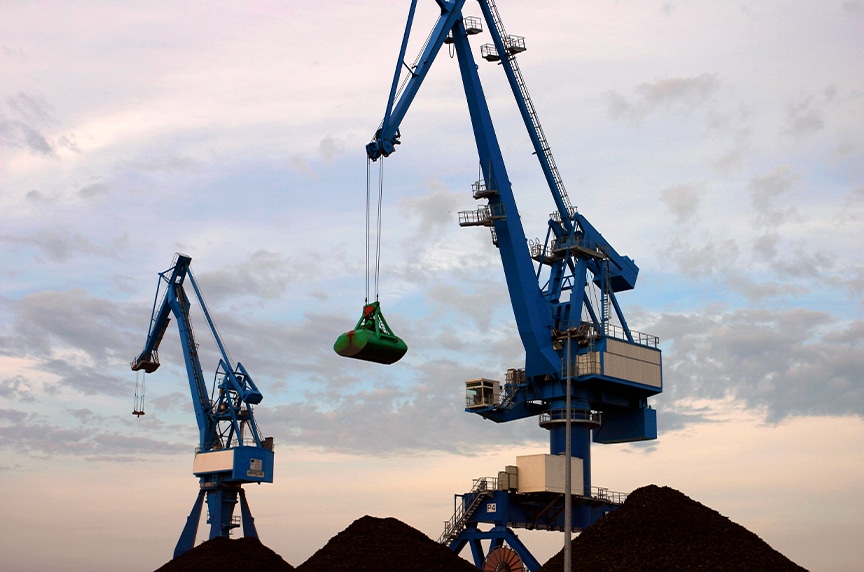
A level-luffing crane consists of a vertical mast attached to a rotating, latticed jib that slews and moves inward and outward from the base.
The inward and outward jib movement unique to these cranes provides a mechanism for keeping the hook leveled while simultaneously moving the jib up and down. This makes these cranes particularly useful when carefully lifting and moving loads near ground level.
Rather than a trolley and hook block traveling along the jib, the jib itself moves inward and outward to move into place for lifting and lowering the load. These cranes are often used in building ships, freight loading, and construction.
Types of Mobile Cranes
Mobile cranes consist of an outstretched boom—often referred to as a lattice or telescopic boom—mounted to a truck or other mobile structure that travels via treads or tires. The boom can rotate up to 360 degrees and extend to varying lengths depending on the type and size of the crane. These types of cranes are not restricted to a fixed path and can move throughout a construction site and/or between sites.
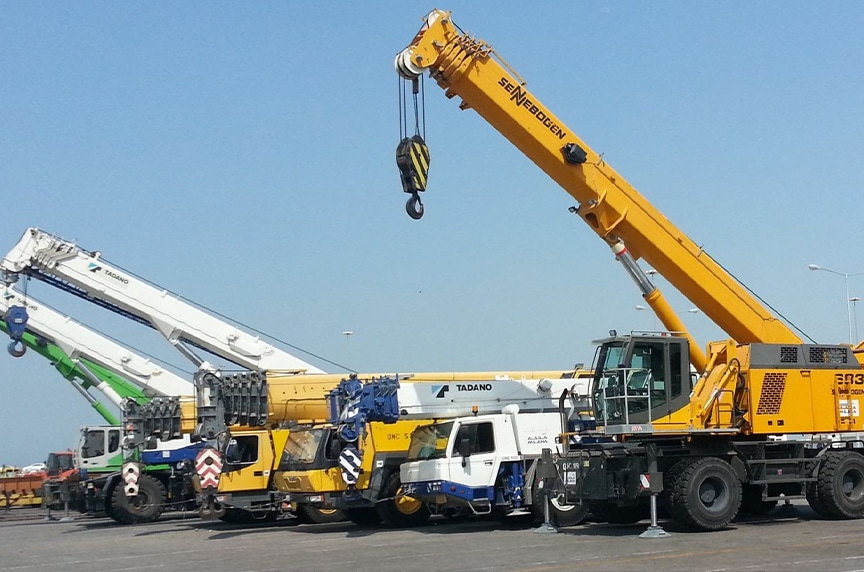
Depending on the type of mobile crane, the crane may or may not be road legal. Some sources define a mobile crane as this, while others define any crane mounted to a mobile vehicle powered by an engine as a mobile crane. For the purposes of this article, the latter explanation is considered a mobile crane.
Crawler Cranes
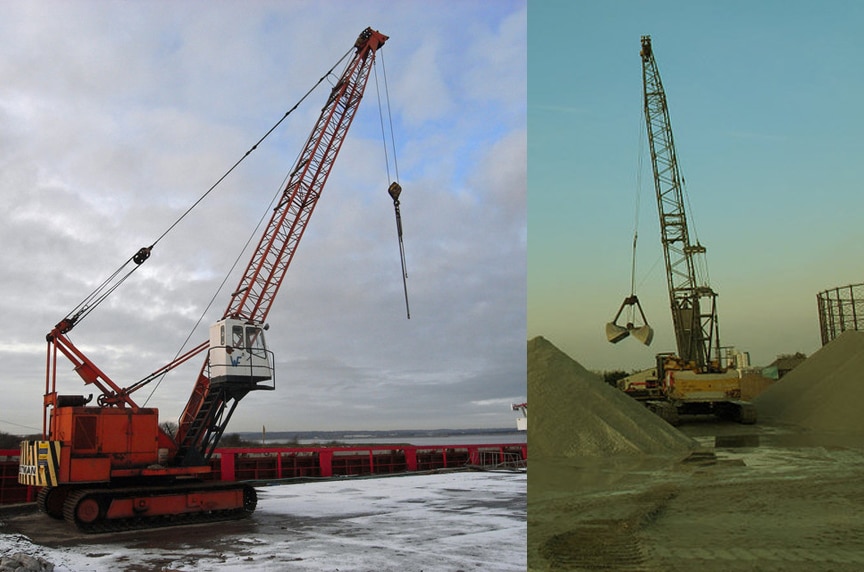
Crawler cranes, also referred to as lattice cranes, boom lattice cranes, lattice crawlers, telescopic crawlers, etc. – are the largest of the mobile cranes. These are heavy duty cranes that utilize “tank-like” treads to move throughout a construction site and can lift in excess of 2500 tons.
Crawler cranes can lift the heaviest loads and require the most on-site assembly out of all the mobile cranes. Depending on the size of the crane and weight of loads it is intended to lift, onsite assembly may include:
- Attaching the tracks
- Assembling the lattice boom
- Addition of counterweights
Crawler cranes do not require the use of outriggers as the treads provide adequate stability. Due to their extensive on-site assembly, massive size, and treads, crawler cranes are not road legal.
Crawler cranes may utilize a lattice boom or a telescopic boom. Those that utilize a lattice boom can lift heavier capacities at higher heights and further distances than those that utilize a telescopic boom.
Rough Terrain Cranes
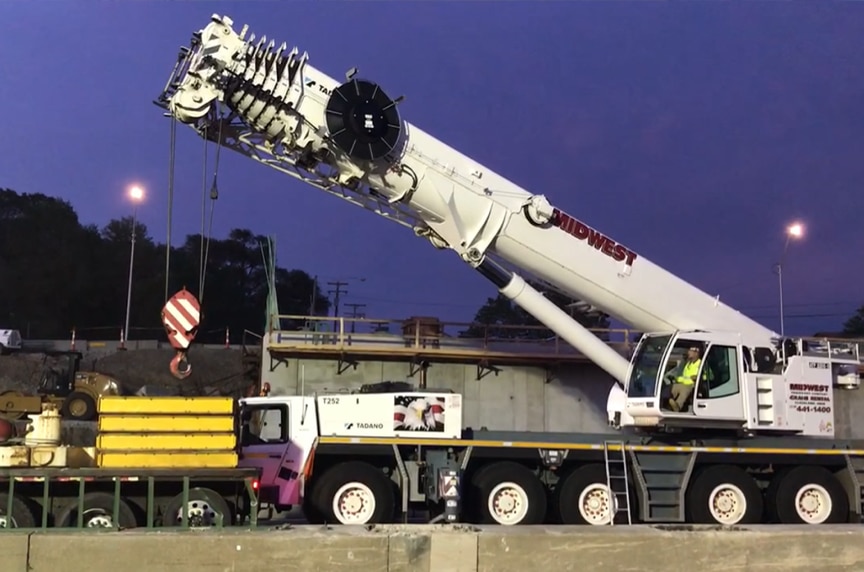
Rough terrain cranes, also known as “RT” cranes, are a type of mobile crane designed specifically for “off-roading” in challenging environments that may include mud, snow, etc.
Rough terrain cranes are mounted on four tires and use a telescoping boom for pick and carry operations up to 165 tons. Due to their compact frame, they are good for navigating through and lifting in confined areas. RT cranes are often applicable in instances where a crawler crane could be applied, but a lesser load capacity or navigation through confined spaces is necessary.
Because RT cranes are mounted on an undercarriage with tires, they are easily set up and transported from site to site, but are not road legal. These cranes are operated from a cab, which swivels over the undercarriage in tandem with the boom’s movement. Their on-site assembly requirements include stabilizing the crane for hoisting with the use of outriggers.
All-Terrain Cranes
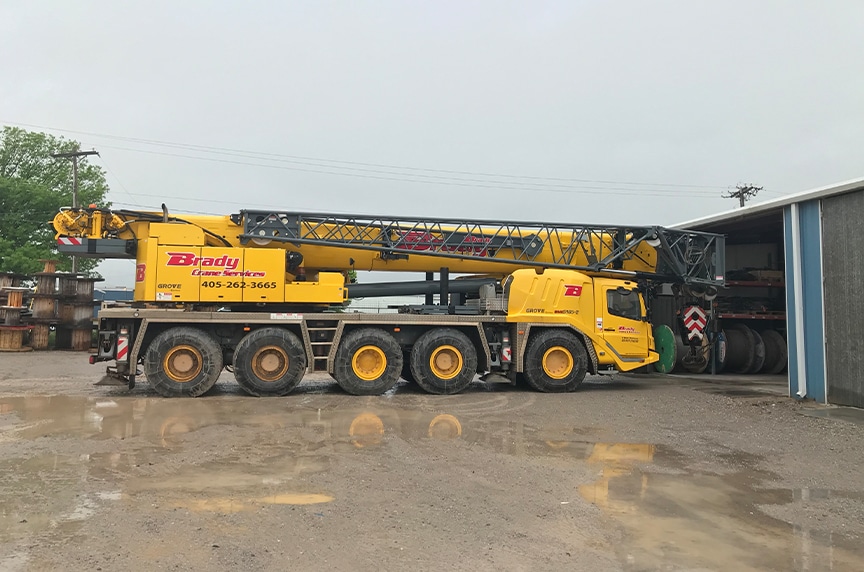
An all-terrain crane is a type of mobile truck crane that can travel both on the road (at high speeds on the highway) and on most off-road surfaces. Like a large truck, these cranes have anywhere from 4-18 tires depending on the size of the crane.
A telescopic boom mounted onto the bed of the truck is used to lift and move loads. All terrain cranes can lift much more than a rough terrain crane can—at capacities up to 1200 tons—but are less capable of navigating in extreme environments or in confined areas.
All-terrain cranes are operated from a cab which swivels over the truck bed in tandem with the boom’s movement. The crane requires some on-site assembly as it is stabilized by outriggers and balanced by counterweights.
Truck Cranes
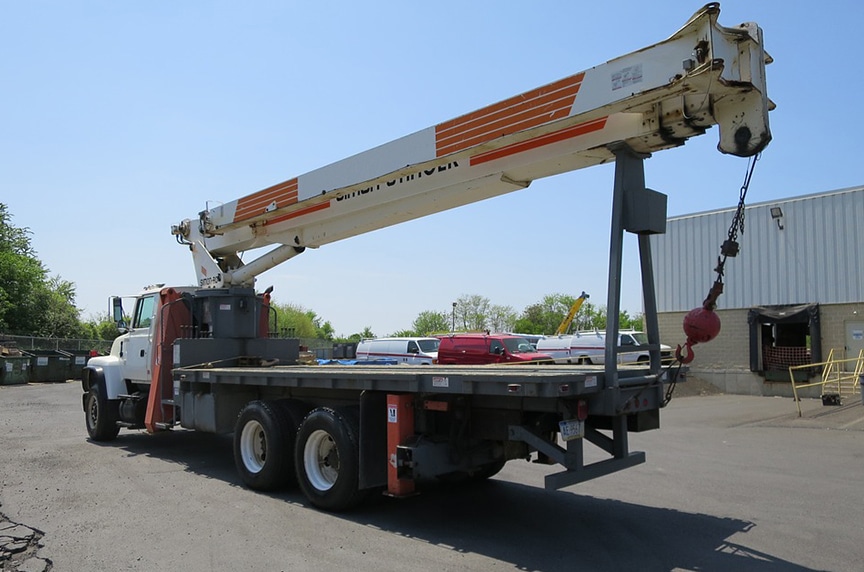
The terms truck crane, boom truck, and truck mounted crane (TMC), are used interchangeably. Truck cranes are a type of mobile crane made of a boom mounted to a truck bed and are, therefore, road legal. Truck cranes are smaller, less versatile, and used for lifting lighter loads (load capacity limit of about 45 tons).
Carry Deck Cranes
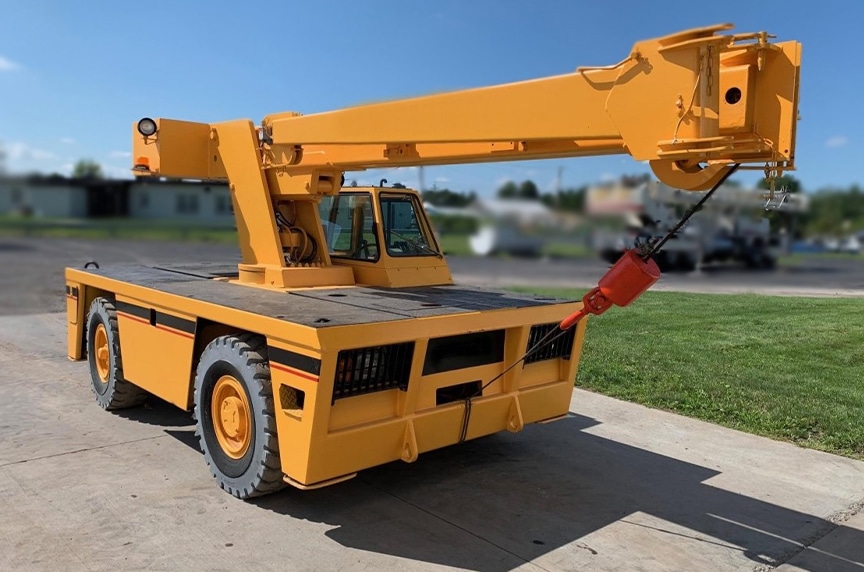
A carry deck crane consists of a rotating, telescopic boom mounted to a small, flat platform with four wheels. These cranes use outriggers and tend to lift loads at around 4-10 tons. As the name suggests, these cranes carry materials throughout a site by lifting and loading them onto the deck.
Wrapping it up
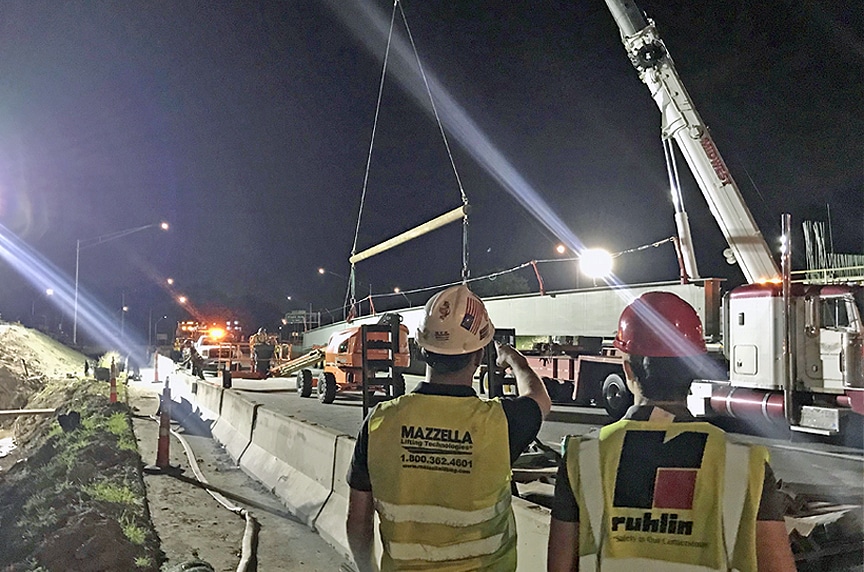
We hope that this article helped you to form a base-level understanding of the different types of construction cranes and how they compare to one another. There are mobile cranes and there are static cranes—each of which have slightly different capabilities and features from one another.
Overhead cranes, tower cranes, and level-luffing cranes are all static cranes, meaning that their lifting range is restricted to a fixed path. Mobile cranes are not restricted to a fixed path because they are mounted to treads or tires and can be driven throughout a job site.
At Mazzella, we provide complete lifting and rigging solutions, including:
- High-performance wire rope and spooling capabilities
- Wire rope, alloy chain, and synthetic sling assemblies
- Rigging hardware
- Rigging inspection and repair
- Hoists, hoist parts, and hook blocks
- Below-the-hook lifting devices
- Lifting and rigging training
If you’re interested in learning more about how we can help with your next project, or with the training of your employees, contact one of our Lifting Specialists to schedule a consultation.
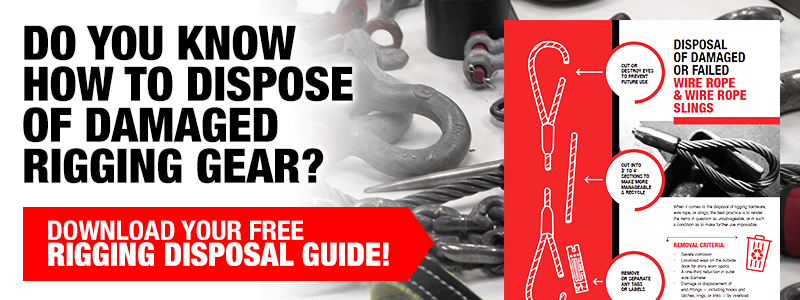
Copyright 2019. Mazzella Companies.
